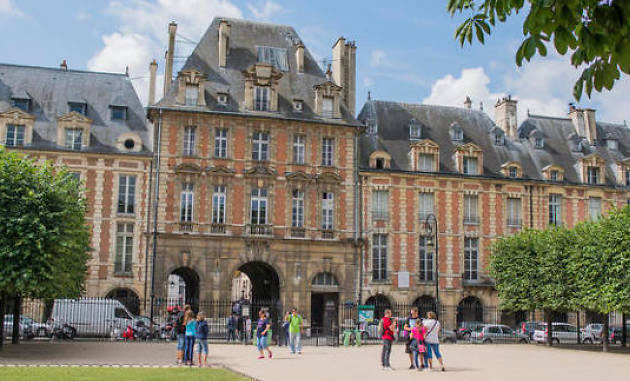The Origin of Search is Older Than You Think…and French

In the late 17th Century, Europeans began traveling to Paris and the other great cities in large numbers for the first time. During these journeys of discovery, many made their trips to study the Continent’s great monuments or religious sites. Being educated people of financial means, they were interested in the ideals of humanism that came with the Renaissance; this included architecture, history, new inventions, and technological advancements. This was the path that western civilization was taking; the City of Man above St. Augustine’s City of God. Europe was awakening to a brighter future as they emerged from medieval slumber and the Reformation, and the Wars of Religion that followed.
Paris was at the center of this new wave of city planning and modernization. In the second half of the 17th century, the French city was rebuilding like no other metropolitan capital. Historian Joan DeJean explains that Paris was the first city to have public mail delivery, public transportation, and street lights. Public spaces and avenues were springing up across Paris, now an open city devoid of defensive walls for the first time since it was a Roman encampment. The influx of visitors needed reliable recommendations for safe lodging, good places to eat, and information about every aspect of life in the city.
In her book How Paris Became Paris: The Invention of the Modern City, Professor DeJean credits Germain Brice with writing the first modern city guide to Paris published in 1684. Brice’s guide, Description de la Ville de Paris, Et de Tout ce qu’Elle Contient de Plus Remarquable was more than just a listing of religious curios and historically significant structures that were so common at that time. It was, in fact, the first modern city guide published to assist the curious explorer. It preceded Google, Excite, Yahoo, Lycos, AskJeeves, Yelp!, GeoCities, and similar online city guides by roughly 316 years!
It was the same basic notion as modern online search tools and city guides but delivered for another age in a tangible printed format. There were no pin drops, customer selfies, or helpful reviews, but there was a useful, detailed city map. It was the best-selling travel guide to any city until the 1750s.
Behaving much the same as a vacationing tourist might today, wandering streets with a mobile phone in hand to refer to maps and points of interest, the English and other travelers meandered through public gardens and cafes with Brice’s guide firmly in hand.
Brice’s guide successfully solved a problem that nobody had addressed before; putting maps and information in the hands of the people who needed it most. His insight into the future was remarkable. Today, we might consider him the grandfather of 21st Century travel and search guides found all over the Internet for our conveniences. C’est magnifique!
Further Reading
A Brief History of Search & SEO by Amanda Zantal-Wiener
https://blog.hubspot.com/marketing/a-brief-history-of-search-seo
How Paris Became Paris: The Invention of the Modern City by Joan DeJean
Bloombury Publishing PLC, 2014.

About Hallaron Advertising Agency
Mike Hallaron is founder and principal partner and has served as director of accounts at Hallaron Advertising Agency in The Woodlands, Texas since 2003. The agency works closely with clients supplying branding and advertising strategy and implementing effective, award-winning campaigns. More than just an idea shop, Hallaron is a full-service agency focused on increasing client’s sales using branding, marketing, and media services.
(281) 299-0538
2002 Timberloch Place, Suite 420
The Woodlands, Texas 77380

